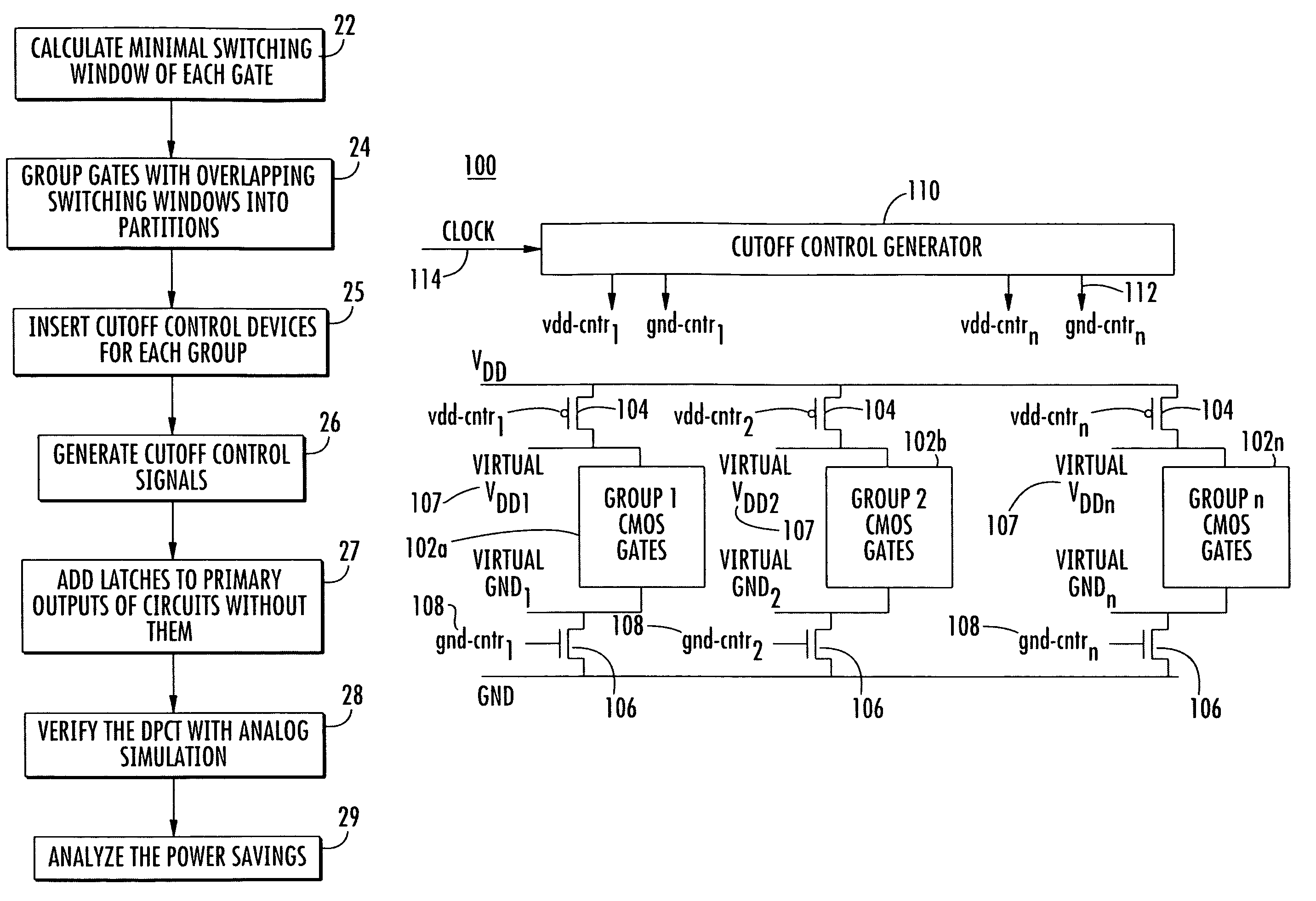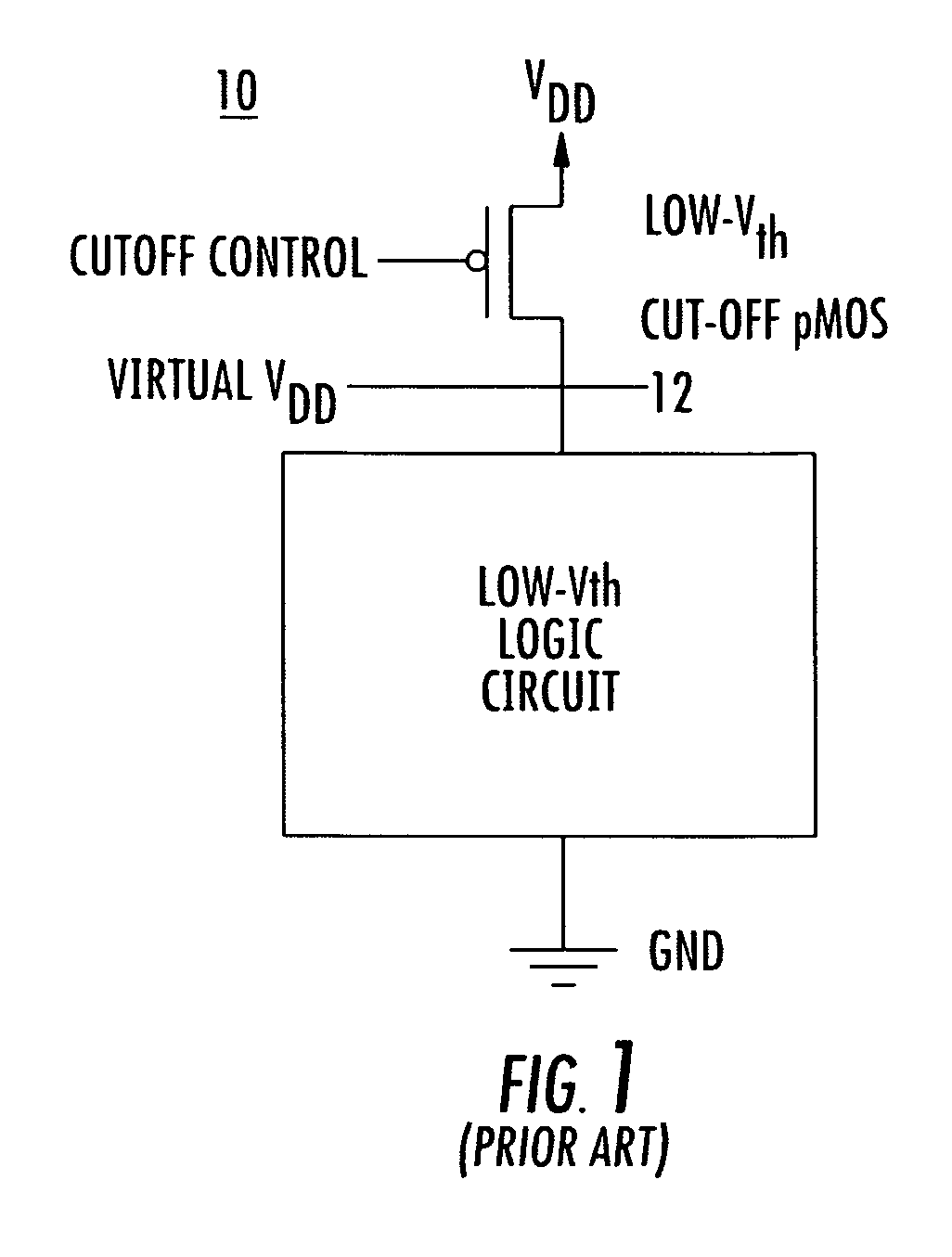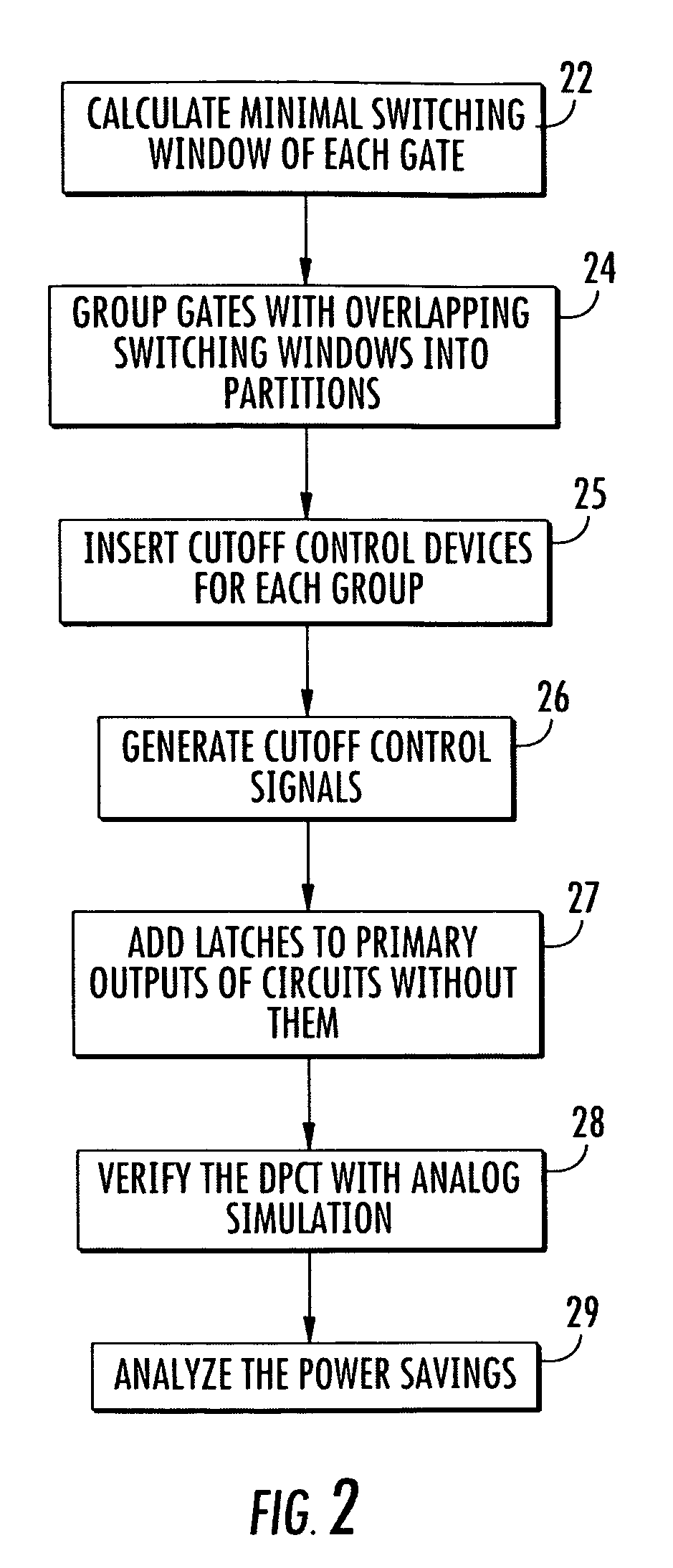Method and system of dynamic power cutoff for active leakage reduction in circuits
a technology of active leakage and circuit, applied in the direction of power consumption reduction, pulse technique, instruments, etc., can solve the problems of long sleep period, data loss, and reduced circuit leakage power in standby mode, so as to reduce active leakage
- Summary
- Abstract
- Description
- Claims
- Application Information
AI Technical Summary
Benefits of technology
Problems solved by technology
Method used
Image
Examples
Embodiment Construction
[0020]Reference will now be made in greater detail to a preferred embodiment of the invention, an example of which is illustrated in the accompanying drawings. Wherever possible, the same reference numerals will be used throughout the drawings and the description to refer to the same or like parts.
[0021]FIG. 2 is a flow diagram of a method for dynamic power cutoff for active leakage reduction in a circuit 20 in accordance with the teachings of the present invention. In block 22, a minimal switching window (MSW) for each gate is identified. In one embodiment, static timing analysis can be used to determine the minimal switching window (MSW).
[0022]The switching window and minimal switching window (MSW) of a gate are based on a timing window, as shown in FIG. 3. The timing window can be conventional as described in T. Raja, V. Agrawal, and M. Bushnell, “CMOS Circuit Design for Minimum Dynamic Power and Highest Speed,” in Proc. of the 17th Int'l. Conf on VLSI Design, pp. 1035-1040, Janu...
PUM
 Login to View More
Login to View More Abstract
Description
Claims
Application Information
 Login to View More
Login to View More - R&D
- Intellectual Property
- Life Sciences
- Materials
- Tech Scout
- Unparalleled Data Quality
- Higher Quality Content
- 60% Fewer Hallucinations
Browse by: Latest US Patents, China's latest patents, Technical Efficacy Thesaurus, Application Domain, Technology Topic, Popular Technical Reports.
© 2025 PatSnap. All rights reserved.Legal|Privacy policy|Modern Slavery Act Transparency Statement|Sitemap|About US| Contact US: help@patsnap.com



